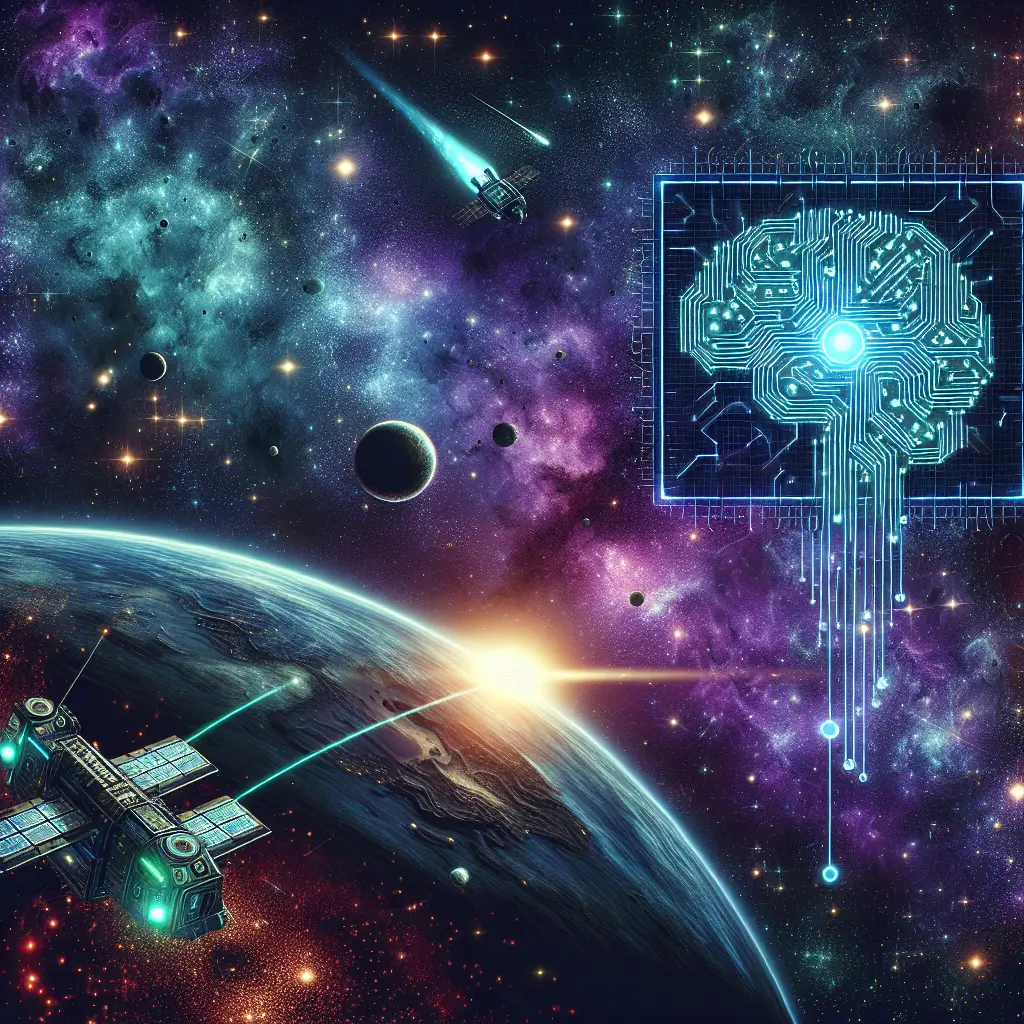Artificial Intelligence (AI) technology today has imprinted its mark on an array of scientific fields, but its incorporation into space exploration holds immense potential that can revolutionise our understanding of the universe. AI tools and applications in space exploration signify an advanced step in technological evolution, presenting unprecedented opportunities for interstellar research and establishing a human presence beyond Earth.
NASA and other space agencies worldwide have already begun implementing AI in various capacities. From enhancing astronaut capabilities on space missions to conducting independent explorations on distant celestial bodies, AI is fundamentally transforming the way we explore space.
With AI, we can augment our capabilities to comprehend the massive amount of data generated from space explorations. Machine learning algorithms allow us to analyse complex patterns within space data, enhancing our ability to predict meteorological events and understand cosmic phenomena. For instance, NASA’s Frontier Development Lab uses AI to interpret data for deep space exploration. AI algorithms identified previously unknown exoplanets in the data from NASA’s Kepler Space Telescope, exemplifying the critical role that AI has to play in the assimilation and analysis of space data.
Furthermore, AI contributes to the optimisation of spacecraft’s performance and longevity. Prognostical algorithms, a class of machine learning, are employed to predict and prevent potential technical failures. AI is even used for “autonomous science,” enabling spacecraft to detect and react to unplanned occurrences or changes autonomously.
Robotic exploration is an area that stands to gain significantly from advancements in AI. Robots fitted with AI can spend longer period exploring harsh environments such as Mars or icy moons in our solar system, where survival conditions for humans are yet impossible. NASA’s Mars rover “Curiosity” demonstrates this, utilising AI to navigate the Martian terrain and choose targets for study independently.
Simultaneously, AI-propelled machinery can also act as astronauts’ assistants in space stations. Robonaut, a human-like robot developed by NASA, shows how astronauts’ tasks can be mechanised, lowering the risks associated with human spaceflight. Astrobee, a robotic system that performs routine duties aboard the International Space Station, illustrates another profound application of AI in space.
AI’s capacity in enabling real-time communication in deep-space missions is another noteworthy application. Currently, communication between Earth and Mars can take up to 24 minutes, depending on their relative positions. AI can manage the decision-making process during this latency, enhancing the effectiveness of such missions.
However, the adoption of AI also presents unique challenges. The space environment is unpredictable, and the data gathered often comprises unforeseen aspects that general AI algorithms may struggle with. To this end, cognitive reasoning must be integrated into AI systems to improve efficiency in unknown environments.
The road to a future where AI and space exploration converge is still being paved. NASA has already launched AI-controlled nanosatellites into space. Future missions aim to have AI conducting experiments, searching for signs of life, and even terraforming planets for human habitation.
Implementing AI in spacecraft could also mean significant energy savings. The telecommunications array is one of the highest energy-consuming constituents of a spacecraft. AI systems designed to optimally adjust the array’s configurations could save substantial amounts of energy, increasing mission longevity.
One can’t ignore the ethical implications of employing AI in space research. What decision-making powers should be given to AI? How do you program ethical constraints into an AI system that deals with circumstances humans have not encountered? These are critical questions that space agencies must address.
Overall, the role of AI in future space exploration is undeniable. It is integral to streamlining interstellar missions, expanding our cosmological knowledge, and breaking through current barriers in space technology. As researchers continue to refine AI capabilities, the feats we can achieve in space exploration become boundless.
However, it’s crucial not to forget the multidimensional nature of space exploration – a marriage between STEM disciplines and the humanities. As AI takes on a newfound significance in space exploration, let it not override the human aspects of curiosity, discovery, and wonder, for it is the human spirit that first dreamt of exploring the cosmos. The future of space exploration truly belongs to collaborations – not just between humans and machines, but also between nations, cultures, and across different fields of study.
We are at a unique point in history where the power of AI technology is increasingly harnessed to push the boundaries of space exploration. The challenges and opportunities presented in the union of AI and space exploration are both immense and awe-inspiring. By balancing innovation with sound ethical practices and collaboration, the next era of space exploration could be even more extraordinary than we can currently conceive.
Share this content:

